
Configurando AlwaysOn Availability Groups – Parte 3
- 1.Configurando AlwaysOn Availability Groups – Parte 1
- 2.Configurando AlwaysOn Availability Groups – Parte 2
- 3.Configurando AlwaysOn Availability Groups – Parte 3
- 4.Monitorando AlwaysOn
- 5.SQL Server AlwaysOn Configurando Replica Somente Leitura
Seguindo com a série de posts Configurando AlwaysOn Availability Groups, estando o cluster do Windows instalado e configurado, agora vamos habilitar e configurar o AlwaysOn no SQL Server.
Configuração do AlwaysOn no SQL Server
Para habilitar o AlwaysOn no SQL Server abra o SQL Server Configuration Manager, selecione SQL Server Services e clique com o botão direito no serviço do SQL Server e entre em Properties.
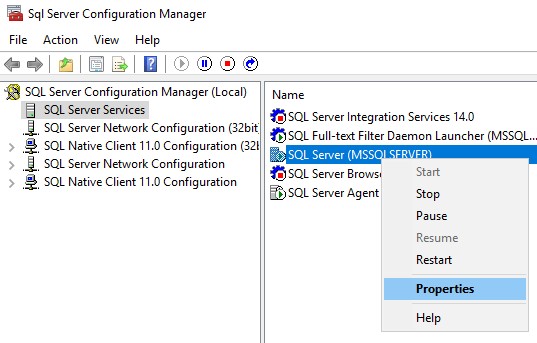

Configurar em todos os Nós do Cluster, habilitando o AlwaysOn no SQL Server e reiniciando o serviço.
O restante da configuração é feito no SQL Server Management Studio. No Object Explorer expandir Always On High Availability e clique com o botão direito do mouse em Avaialability Groups e selecione New Availability Group Wizard.
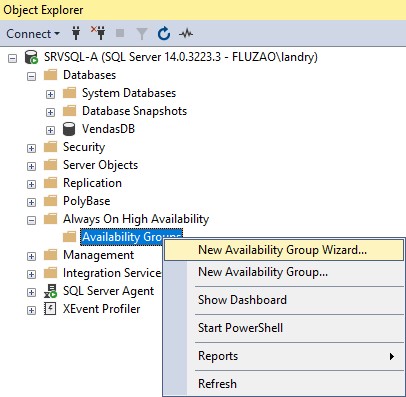
Atribua o nome do grupo seguindo ao padrão recomendado <nome cluster>-AG1.
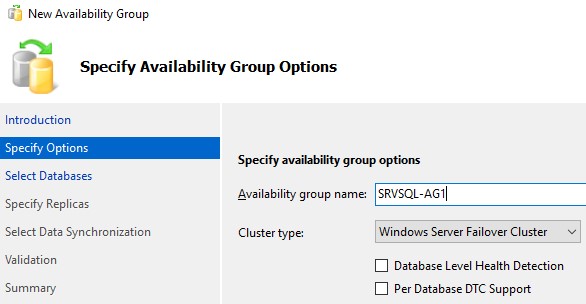
Na tela seguinte vamos selecionar os Bancos de Dados que farão parte deste Availability Group, apenas aqueles com Recovery Full estarão disponíveis!
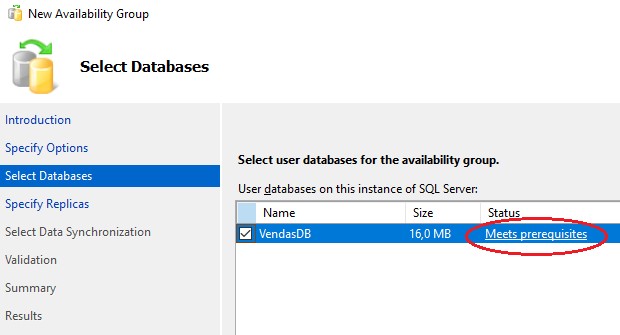
Na tela Specify Replicas vou selecionar as opções de Failover automático e Replica com consulta disponível.

Em Backup Preferences selecione Primary, pois os outros modos não suportam Backup Diferencial.
Para definir um Listener, defina nome similar ao do Avaiabilitity Group com “L” no final: SRVSQL-AGL, porta 1433.
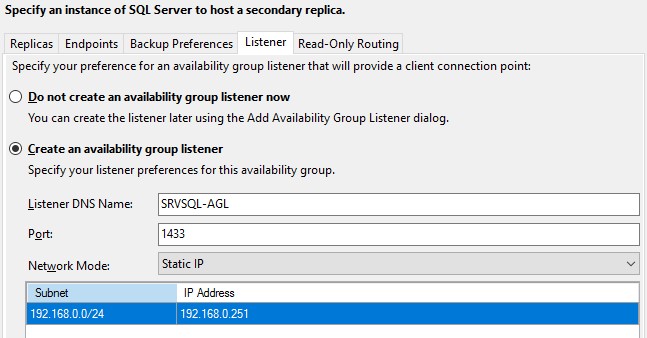
Para realizar a sincronia inicial (Backup / Restore) de modo automático selecione Automatic seeding. Eu particularmente prefiro realizar antes a sincronia manual executando Backup FULL e LOG no Primário, em seguida restaurando nas Réplicas utilizando a cláusula NORECOVERY, neste caso selecione Join only.
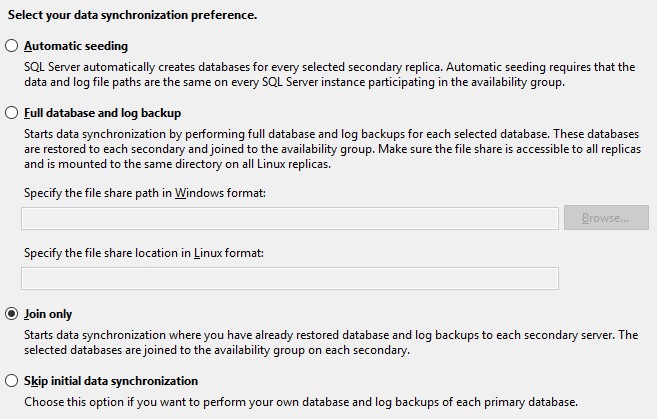
Finalizando a configuração o Wizard irá configurar o AlwaysOn em ambos os Nós e criar o grupo de recursos no Cluster.
Abra o Cluster Manager para verificar a configuração, Nó ativo em Owner Node.
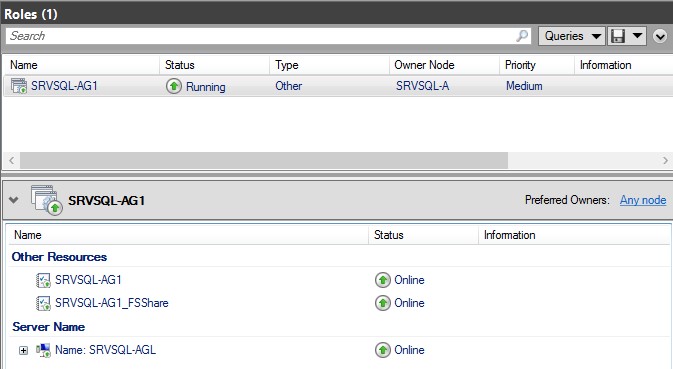
Para monitorar o AlwaysOn basta acessar o Dashboard no Management Studio.

Finalizamos a série de posts sobre AlwaysOn Availability Groups no SQL Server 2017.
Saudações Tricolores,
Landry


Boa Tarde, Tenho uma duvida! O SQLServer foi instalado modo single em cada nó??